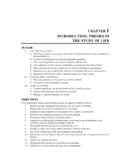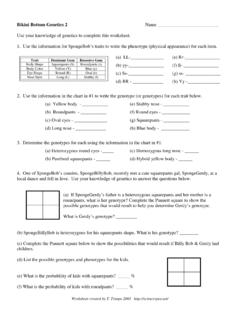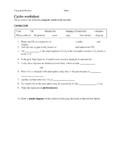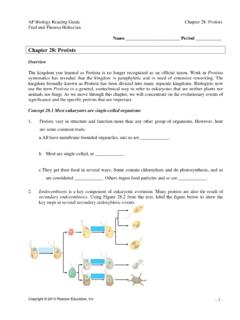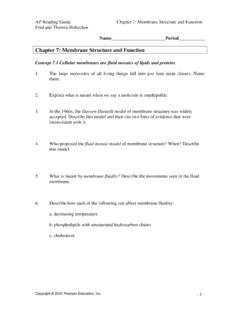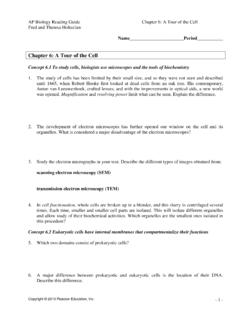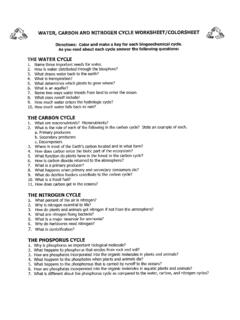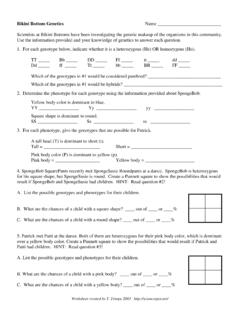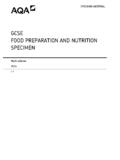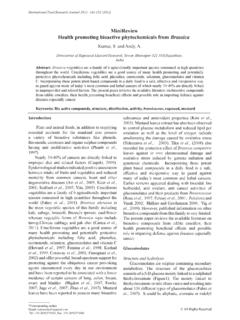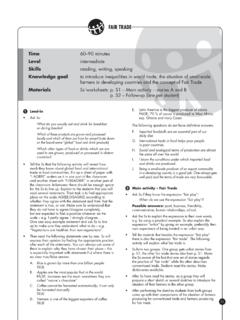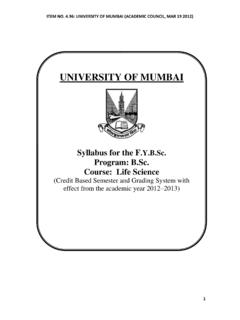Transcription of Chapter 54: Community Ecology - Biology Junction
1 AP Biology Reading Guide Chapter 54: Community Ecology Fred and Theresa Holtzclaw Copyright 2010 Pearson Education, Inc. - 1 - Name_____Period_____ Chapter 54: Community Ecology Concept Community interactions are classified by whether they help, harm, or have no effect on the species involved. 1. What is a Community ? List six organisms that would be found in your schoolyard Community . 2.
2 This section will look at interspecific interactions. Be clear on the meaning of the prefix! To begin, distinguish between intraspecific competition and interspecific competition. Give an example of each. Type of Competition Explanation Example Intraspecific competition Interspecific competition 3. What is G. F. Gause s competitive exclusion principle?
3 Give one example. 4. Define ecological niche. 5. Several species of Anolis lizards live in the same types of trees and have a similar diet . Discuss resource partitioning to explain how interspecific competition is reduced. (Study Figure ) 6. What is the difference between the fundamental niche and the realized niche? AP Biology Reading Guide Chapter 54: Community Ecology Fred and Theresa Holtzclaw Copyright 2010 Pearson Education, Inc.
4 - 2 -7. Study Figure , and then explain what is meant by character displacement. (To do this, you will have to learn or review the difference between sympatric populations and allopatric populations. You will find this information in Chapter 24.) 8. Predation is a term that you probably already know. Can you give examples of some predator-prey combinations as listed below? Predator Prey Example Animal Animal Animal Plant Fungus Animal Bacteria Animal Fungus Plant 9.
5 List three special adaptations that predator species possess for obtaining food. 10. List three ways prey species elude predators. 11. Compare the two types of mimicry. Type of Mimicry Description Example Batesian M llerian 12. What is herbivory? AP Biology Reading Guide Chapter 54: Community Ecology Fred and Theresa Holtzclaw Copyright 2010 Pearson Education, Inc. - 3 -13. Did you list any special herbivore adaptations for predation in your response to question 9?
6 Or plant adaptations to avoid herbivory? List two adaptations for each category here. 14. Describe and give an example of each of the following interactions: Type of Interaction Description Example symbiosis parasitism commensalism mutualism 15. Which category above includes the other three? Note that other texts may define this term more narrowly. 16. Your text uses +/ symbols to indicate how interspecific interactions affect survival and reproduction of the two species.
7 Use this notation for each of these interactions. Type of Interaction +/+, +/ , / , +/0 predation commensalism mutualism parasitism interspecific competition herbivory AP Biology Reading Guide Chapter 54: Community Ecology Fred and Theresa Holtzclaw Copyright 2010 Pearson Education, Inc. - 4 -17. What is species diversity? What are its two components? Why is it important? 18. What does an ecologist summarize in a food web? 19. Know the levels of trophic structure in food chains.
8 Give a food chain here, including four links that might be found in a prairie Community , and tell the level for each organism. 20. Name every organism in the pictured food chain, and give the trophic level in the box. 21. According to the energetic hypothesis, why are food chains limited in length? How much energy is typically transferred to each higher level? 22. What is a dominant species? For the area where you live, what would be considered a dominant tree species? AP Biology Reading Guide Chapter 54: Community Ecology Fred and Theresa Holtzclaw Copyright 2010 Pearson Education, Inc.
9 - 5 -23. How is a keystone species different from a dominant species? 24. Name one keystone species, and explain the effect its removal has on the ecosystem. 25. Explain facilitator or foundation species and give an example. You may omit bottom-up and top-down controls. Concept Disturbance influences species diversity and composition 26. What is the intermediate disturbance hypothesis? Give an example of a disturbance event, and explain the effect it has on the Community . 27. Ecological succession is the changes in species that occupy an area after a disturbance.
10 What is the difference between primary succession and secondary succession? Concept Biogeographic factors affect Community biodiversity 28. Explain latitudinal gradients in terms of species richness. Where is species richness greatest? 29. There are probably two key factors in latitudinal gradients. List and explain both here, and put a star next to the one that is probably the primary cause of the latitudinal difference in biodiversity. 30. Explain what is demonstrated by a species-area curve. AP Biology Reading Guide Chapter 54: Community Ecology Fred and Theresa Holtzclaw Copyright 2010 Pearson Education, Inc.
